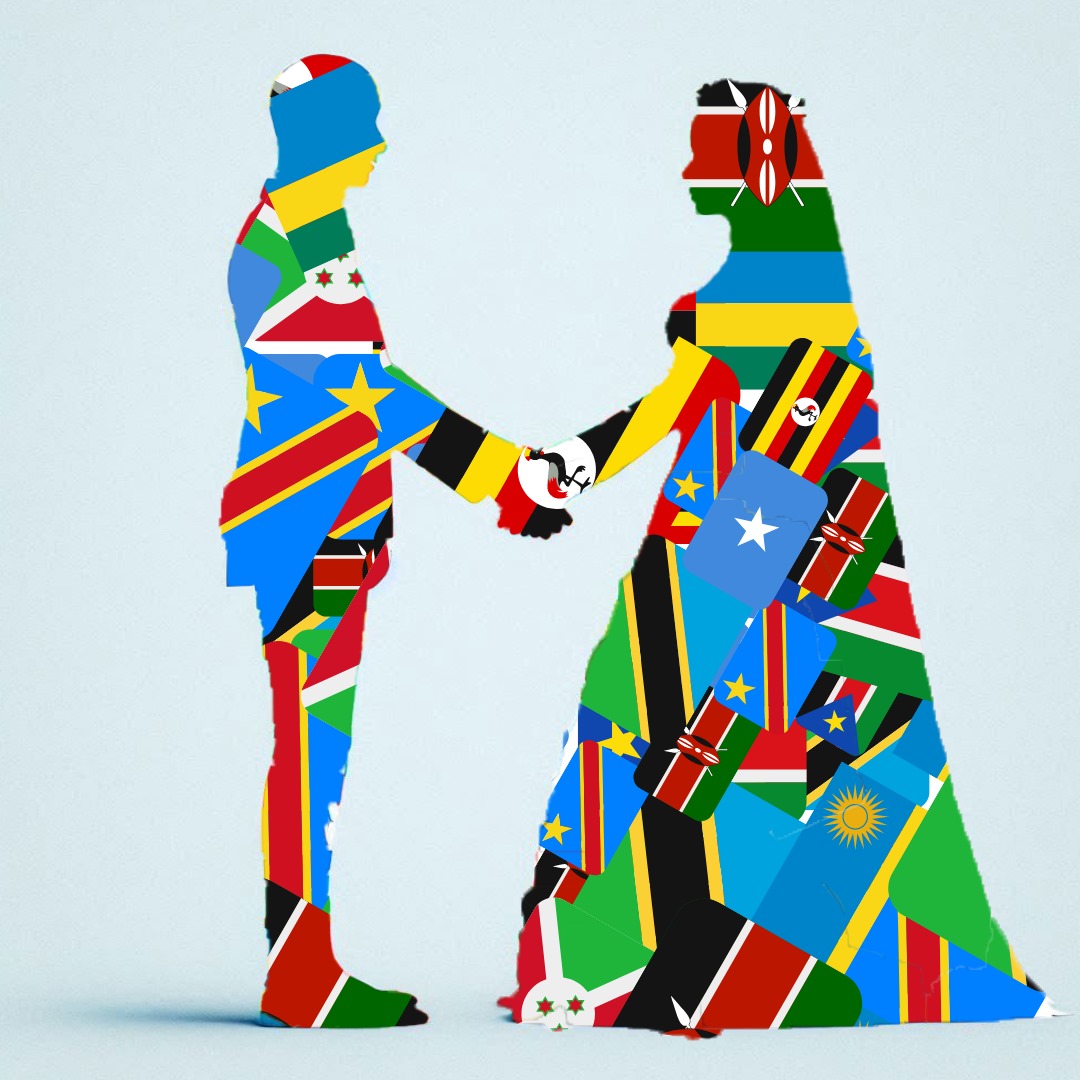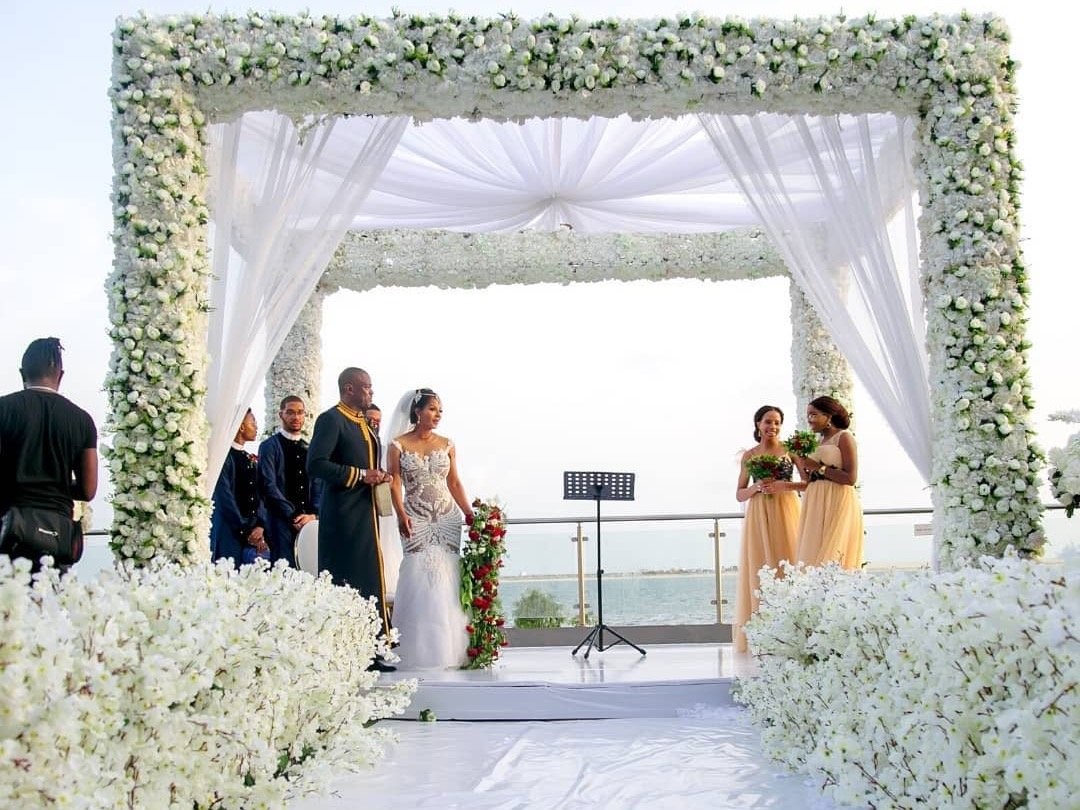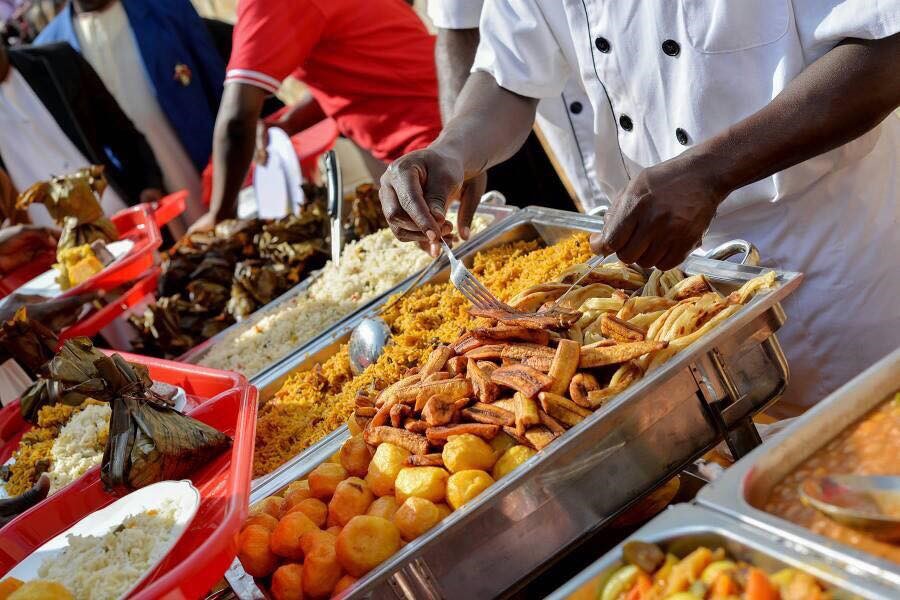East African Weddings: Shared heritage that leaps across borders
East Africa traditionally consisted of Kenya, Tanzania and Uganda, three countries with a deeply shared cultural heritage but over the years that political marriage has grown to include Rwanda, Burundi and most recently DR Congo, South Sudan and Somalia. These countries do not only share political and geographical borders but a rich cultural heritage weaving its communities together to remind them of their historical bond and their inherent brotherhood.
On today’s menu is a cocktail of the shared rituals, practices and traditions that make up the rich wedding landscape in countries that make up East African community.
1. Traditional Ceremonies are a Family Affair
In many East African cultures, engagement ceremonies are significant events and largely involve both the bride and groom’s families and clans. The norm is a three-phased celebration. A pre-wedding visit by the groom to the bride’s parents and closest relatives which also doubles as a bride price negotiations’ meeting. The second is the traditional function usually attended by the rest of the family and symbolizes the joining of two families publicly. The groom’s family presents gifts to the bride’s family, reinforcing the importance of family ties and respect. This event is often filled with music, dance, and traditional attire, setting the stage for the religious wedding celebrations to come which are the third and last part of the celebrations. In some countries like Rwanda and Kenya, usually the two traditional functions are combined while in Uganda and Tanzania where they are increasingly becoming more elaborate and bigger, they usually happen on separate days.
2. Dowry: The bread and butter of customary wedding
Dowry or Bride price remains a key custom in East Africa’s wedding tradition. It is what the prospective wife’s kindred receive as an appreciation token from the groom to be. For those not conversant with the culture, it seems rudimentary if not extortionist but as a long-standing tradition, its proponents score it highly as what legitimizes the marriage and validates the children born in the new union. It’s given in form of cattle among the Ankole of Uganda and the Dinka of South Sudan; in goats among the Gikuyu of Kenya and Somali communities by a variety of traditional gifts in Burundi and so many other parts of the East African community. As debate rages on about the relevance and commercialization of dowry in modern day, many still hold it sacred, further entrenching its timeless significance in East Africa’s wedding ethos.
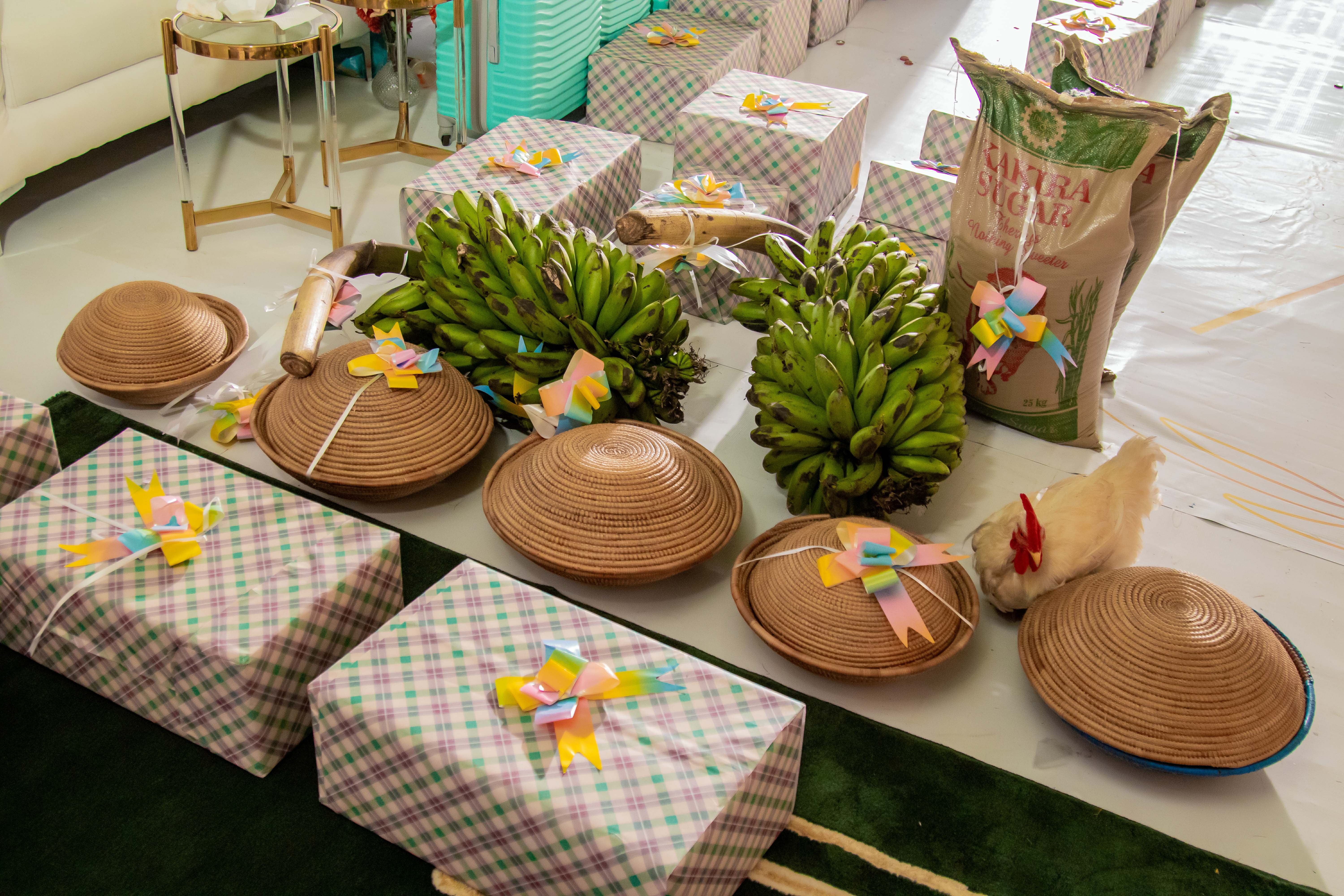
3. Ancestral Rituals and Blessings: Seeking Divine Favor
In many East African communities, weddings involve spiritual rituals to seek blessings from ancestors and deities. These rituals can include offerings, prayers, practices and blessings from elders. Among the Woyo people in DR Congo, for example, a mother gifts a bride pot-lids with pictorial proverbs to use whenever abused by her husband. For whatever abuse, she picks the lid with the appropriate proverb to serve her husband (and his guests) to communicate her dissatisfaction. In Uganda, the “kwanjula” (or introduction) ceremony among the Baganda is a vibrant ceremony to welcome the groom’s family to the bride’s home. To seek blessings for the union, the function is dedicated to the ancestral spirits by pouring a little of the traditional drink usually carried in a big gourd (ekitta). The drink is believed to appease the ancestors buried in the ground to bless the union of the couple.
4. Feasting and drinking: A Culinary Celebration
Food plays a vital role at weddings in East Africa, with lavish feasts that showcase local cuisine in all its savoury splendour. From millet and fish ( pasted with peanut) in Luo weddings among the Kenyans and Ugandans to Ugali and Nyama choma (grilled meat) in Tanzania, to matooke and rice served with chicken or beef stew among the Urundi and Rwandans, the culinary offerings at traditional weddings reflect the region's agricultural bounty and sophisticated recipes. Sharing a meal together symbolizes community and togetherness, reinforcing the bonds between families and friends.
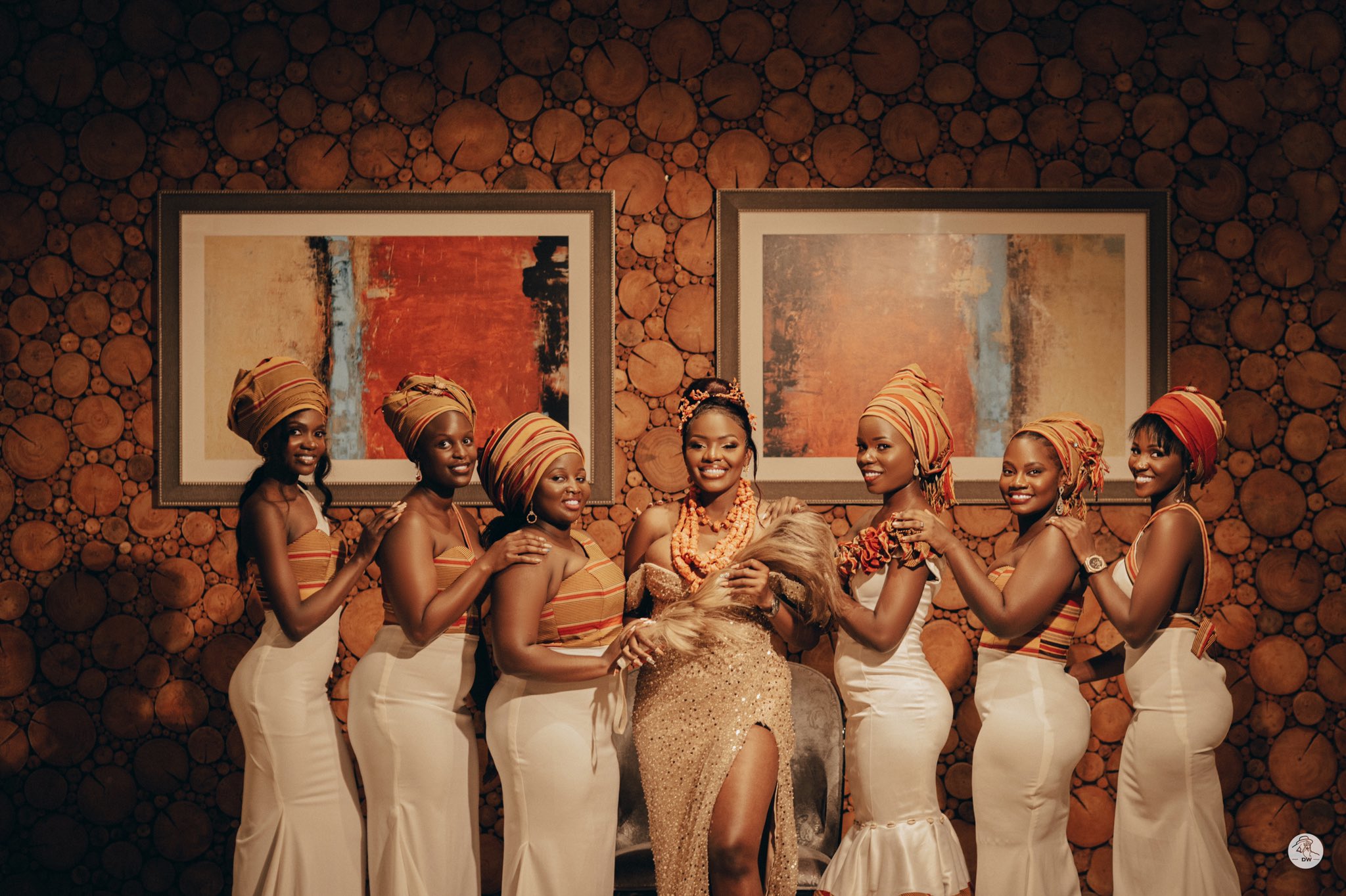
5. Traditional Attire: A colorful fusion of culture and design
Wedding attire across East Africa and indeed Africa is a vibrant expression of cultural identity. Brides often wear intricately designed dresses made from local fabrics, adorned with beads and embroidery. For instance, Somali men wear their traditional ‘Macawis’, an off-shoot of a Saroung worn around the waist and wrapped and draped over the upper half of the body together with ankle length garments with long-sleeves called ‘thwabs’ common among muslims. Thawbs in Tanzania and Uganda are called kanzus won by men at traditional functions. In Maasai culture (of Kenya and Tanzania), the beautiful shuka (a traditional cloth) worn by both brides and grooms is usually a combination of varied colors and styles reflecting the couple's heritage and the region’s rich craftsmanship but it’s all quite connected.
Women’s wear is equally similar. Somali women prefer a dirac (colorful long dress woven out of polyester and cotton) paired with a gogorad (usually underskirts made from silk). Contrast this with the Munyoro bride from Uganda who wears what we call mushanana (a modest redesign of an Indian sari without elaborate stones) with some undergarments.
6. Traditional Dance & Music: The Heart of Celebration
No East African wedding is complete without music and dance. Traditional songs and dances vary by region but often feature lively rhythms that bring communities together. The bride and groom typically lead the first dance, symbolizing their unity and joy. In countries like Tanzania, the "ngoma" (drum) is central to the celebration, energizing guests and creating an atmosphere of happiness but no one beats the cultural Kirundi dance from Burundi when it comes to energizing the guests. A combination of drums and rhythmic handclapping, jumping and singing, the dance takes the famous Ugandan Bakiga kizino dance to another level
There is also the famous Ongahla and Larakaraka dance performed by the Luo at their Nyom ceremonies. Combined with the famous ululations, these dances are a joy to behold and define our cultural nuances in more ways than we comprehend.
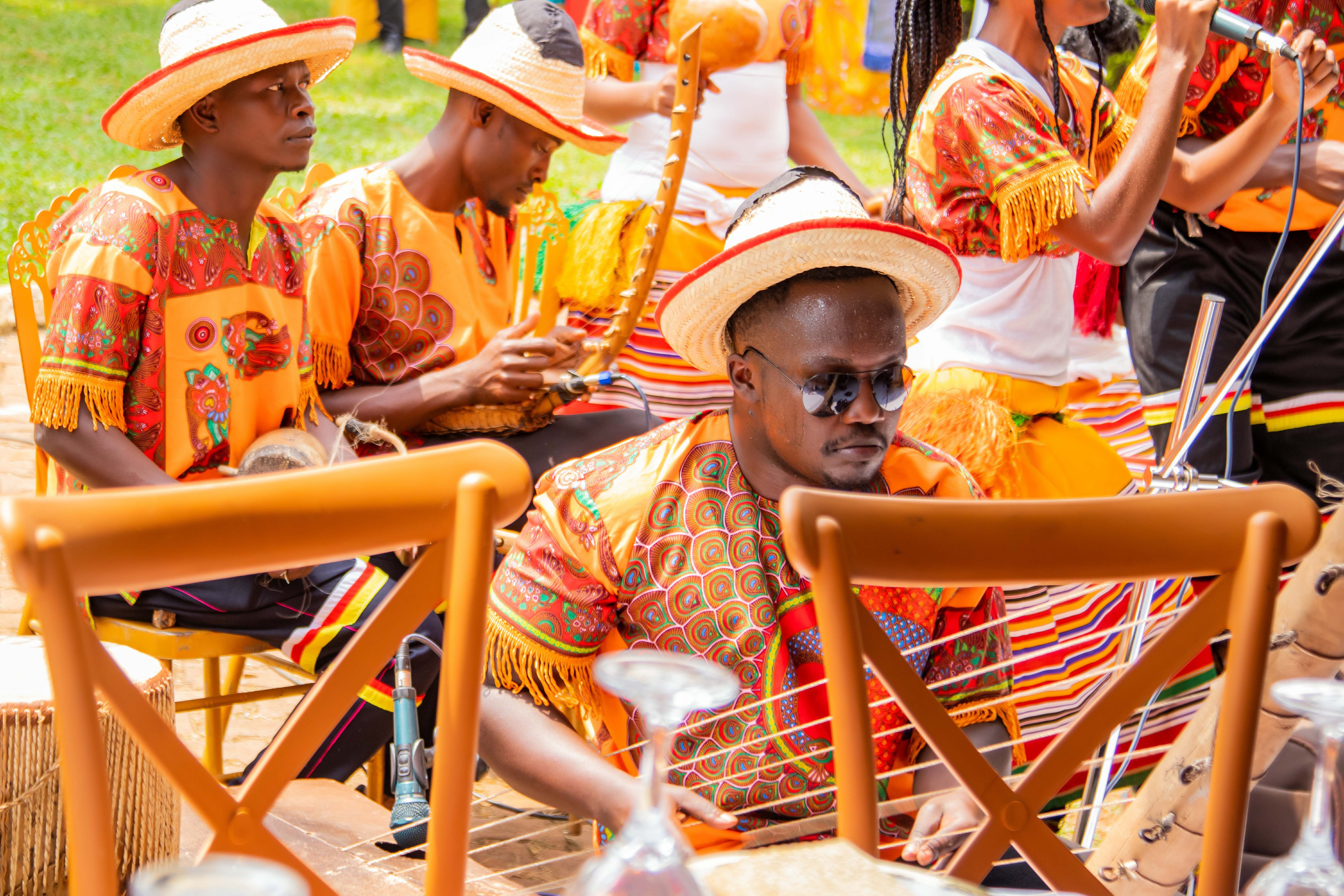
7. Gift giving: Cultural generosity passed down generations
The Batutsi of Rwanda as well as the Bahima and Ankole cultures of Uganda, the Nyambo of Tanzania are known for their famous ‘Kuhingira’ functions where they give the bride and by extension the groom an array of gifts from the moving kind like cattle and goats to the stationary kind like houses and land. In the rest of East Africa, gifts remain a permanent gesture of nuptial celebrations amongst guests and between the newly weds. At wedding ceremonies sometimes a special table is set aside to receive, while a special room is set aside to store and a special vehicle to transport the gifts for the newly weds. That is how numerous they come. They include household items like cutlery and cups but they also include foodstuffs like Ghee, Honey and Milk; toiletries like scented candles, cosmetics and floor mats. There are also household gadgets like Airfryers, Blenders, Flat Irons etc. More commonly lately though, newlyweds receive cash from their guests. No matter what is given, gift-giving on the wedding day remains a major tradition across East Africa.
8. Modern Influences: Intermarriages & Blending Traditions
As East Africa becomes increasingly interconnected, both intermarriages within the region and with outsiders coupled with modern influences, we now have a blend of Western, Middle Eastern and Eastern cultures fused with the traditional practices of people in the region. Many couples now incorporate contemporary elements, such as destination weddings, personalized vows, father-daughter dance while still honouring their cultural heritage. This fusion creates unique celebrations that resonate with both families and reflect the couple's journey.
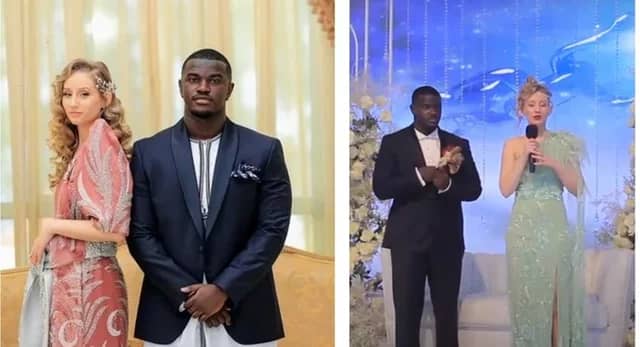
East Africa is a region rich in cultural diversity with Uganda, Kenya and DR Congo having the highest number of ethnicities in Africa and across the world and the wedding traditions are a testament to this vibrant tapestry. Yet this diversity, though distinct, in celebrating the love and commitment of its people, the many shared wedding traditions above beautifully showcase the region’s shared heritage and the importance of community and family traditions in marital bliss. From vibrant attire and joyful dances to meaningful rituals and sumptuous feasts, these customs not only celebrate love but also reinforce the bonds that unite people across the region.
As couples embark on their journey together, they carry with them the rich legacy of their cultures, creating a beautiful tapestry of love that spans generations. Reach out to us to help you plan your wedding across East Africa.


